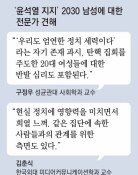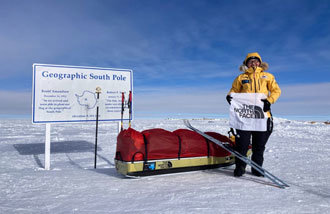Stick to ATSC
Regarding the transmission system of ground wave digital TV, on January 2, the Korean Broadcasting Commission (KBC) and the Ministry of Information and Communication (MIC) reconfirmed the MICs existing position that a weak point of ATSC (Advanced Television Systems Committee) law reception can be improved. However, some labor unions in broadcasting stations which support DVB-T (Digital Video Broadcasting-Terrestrial) dont agree with this and seem to be resisting.
KBC and the MIC, which have researched actual conditions of 18 broadcasting institutes in eight countries including the U.S., Canada, and Australia for about a month with experts from three public broadcasting stations in order to solve the controversy over the transmission system of digital TV, announced the report on this day.
In the report about the result of research on actual conditions of digital TV in foreign countries, KBC and the MIC revealed that ATSCs law efficiency in reception was overcome with reception technology improvements, as laboratory tests proved.
Regarding DVB-T, which is capable of movable reception but criticized for its incapability of HD (Horizontal Distribution), the report reserved position, saying that the possibility of HD movable reception was confirmed in Australia, but that reality and necessity should be examined for actual service.
In regard to this, Lee Jae-hong, a manager at the MIC said that reception improvement was better than expected in both ATSC and DVB-T. He added that this is the reason why Korea has no reason to switch from ATSC to DVB-T.
However, the controversy over HD movable reception of DVB-T is not expected to end because KBC and the MIC have different opinions.
In regard to the test of DVB-T performed in Australia, the MIC pointed out that reception is not good even in fixed reception zones, while KBC revealed that reception of DVB-T is good even in downtown areas where high buildings are crowded.
Moon Hyo-seon, vice chairman of the Korea Broadcasting Engineers & Technicians Association (KOBETA), said that the report seems to be slanted toward the MICs position, adding, the MIC is sticking to its own opinion even though it was proved that DVB-T is capable of HD and movable reception.
Meanwhile, digital ground wave broadcasting, which was planned to be extended to six cities in late 2003, was put off by the request from executives of ground wave broadcasting stations with the emerging controversy. KBC, the MIC, and KBS (Korean Broadcasting System) have agreed to create a committee for pushing forward a field test for digital TV, and present a report in June.
Seung-Jae Lee Seong-Yub Ra sjda@donga.com cpu@donga.com






